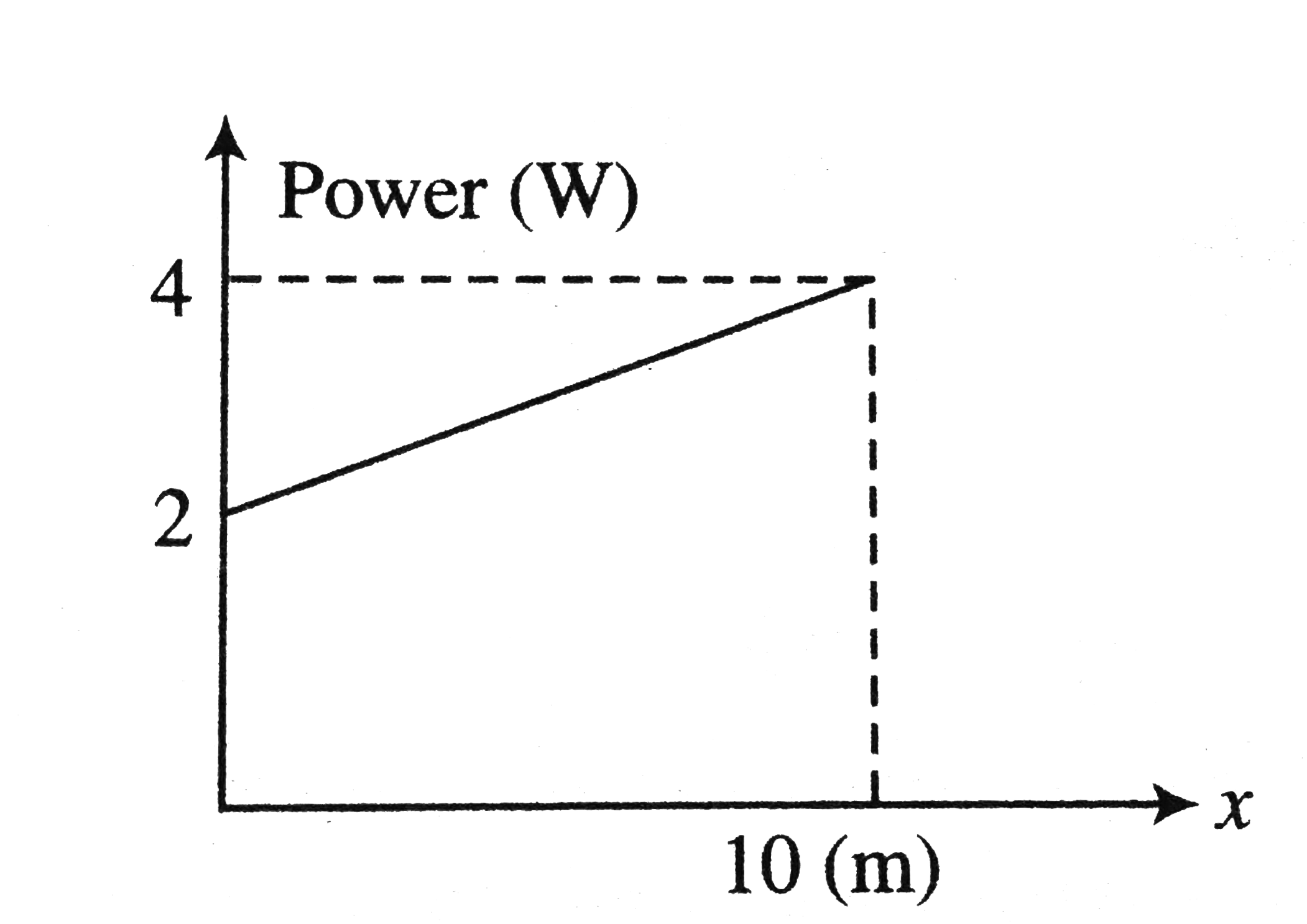Gravitational potential at X=2m is decreasing at a rate of 10J/kg−m along the positive x- direction. If implies that the magnitude of gravitational filed at X=2m is also 10n/kg. Is this statement true or false?
|E|=√(−∂V∂X)2+(−∂V∂Y)2+(−∂V∂Z)2
−∂V∂x=10J/kg−m is given
No information is given about
−∂V∂Y and −∂V∂Z
So, |E|≥10N/kg
Topper's Solved these Questions
- GRAVITATIONBOOK - DC PANDEYCHAPTER - GRAVITATIONEXERCISE - Exercise 13.5
6 Videos
- GRAVITATIONBOOK - DC PANDEYCHAPTER - GRAVITATIONEXERCISE - Exercise 13.6
3 Videos
- GRAVITATIONBOOK - DC PANDEYCHAPTER - GRAVITATIONEXERCISE - Exercise 13.3
5 Videos
- GENERAL PHYSICSBOOK - DC PANDEYCHAPTER - GENERAL PHYSICSEXERCISE - INTEGER_TYPE
2 Videos
- KINEMATICSBOOK - DC PANDEYCHAPTER - KINEMATICSEXERCISE - INTEGER_TYPE
11 Videos
Similar Questions
Knowledge Check
A particle A of mass 10/7kg is moving in the positive direction of x−aξs. At initial position x=0, its velocity is 1ms−1, then its velocity at x=10m is (use the graph given)
 A(a) 4ms−1B(b) 2ms−1C(c) 3√2ms−1D(d) 1003ms−1
A(a) 4ms−1B(b) 2ms−1C(c) 3√2ms−1D(d) 1003ms−1The gravitational potential changes uniformly from -20 j/kg to -40 J/kg as one moves along x-axis from x = -1m to x = +1m. Then gravitational field at origin
Amust be equal to 10 N/kgBmay be equal to 10 N/kgCmay be greater than 10 N/kgDmay be less than 10 N/kgGravitational potential in a region is given by V=−(x+y+z) J/kg . Find the gravitational intensity at (2,2,2)
A(ˆi+ˆj+ˆk)N/kgB2(ˆi+ˆj+ˆk) N/kgC3(ˆi+ˆj+ˆk)N/kgD4(ˆi+ˆj+ˆk)N/kg
The gravitational potential in a region is given by, V=200(X+Y)J/kg. Find the magnitude of the gravitational force on a particle of mass 0.5kg placed at the orgin.
View SolutionThe gravitational potential in a region by V = (20x + 40y)j/kg. Find out the gravitational field (in newton /kg) at a point co-ordinates (2,4). Also find out the magnitude of the gravitational force on a particle of 0.250 kg placed at the point (2,4) .
View SolutionMoment of a force of magnitude 10 N acting along positive y-direction at point (2m,0,0) about the point (0,1m,0) in N-m is
View SolutionThe gravitational potential change uniformly from −20J/kg to −40J/kg as one moves along X-axis from x=−1m to x=+1m. Mark the correct statement (s) about gravitational field intensity of origin.
View SolutionTwo particle of masses 4kg and 8kg are kept at x=−2m and x=4m respectivley. Then, the gravitational field intensity at the origin is
View Solution
